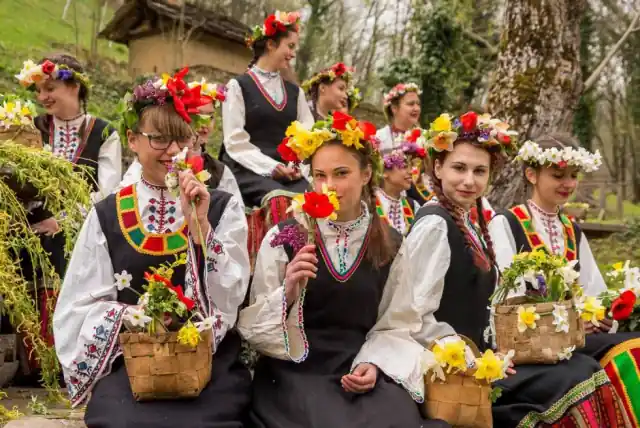
Lazarus Saturday is a Christian celebration commemorating Jesus Christ’s miraculous resurrection of Lazarus of Bethany. It takes place on the Saturday before Palm Sunday and Holy Week.
Traditionally, green willow branches are cut off on Lazarus Day and used to decorate the doorways on Palm Sunday.
According to the New Testament, Lazarus is Christ’s disciple and the brother of Martha and Mary Magdalene, whom Jesus raised from the dead.
God calls Lazarus out of his grave and revives him. According to legend, Lazarus lived for another 30 years and died as the city’s bishop.
Lazarus passed away in the past 30 years on the island of Cyprus. The saint’s very name represents health and life.
The feast, also known as Lazarnitsa, Lazarus, Lazarus Saturday, or Lazarus Day, is celebrated in celebration of the fields, pastures, and woods.
St. Lazarus is the lord of the forests and leaves, clearing the soil with his axe to allow people to sow their fields.
On this day, the ‘Lazaruvane’ tradition is observed, as well as memorial rituals (which commemorate the memory of the departed).
In Northeastern Bulgaria, it is believed that on Vrabnitsa, the deceased are “let go” from their graves. The Lazarus All Souls Day is observed to give tribute to the deceased.
On the eve of Lazarus Day, ladies visit the cemetery to burn incense, pour wine over their loved ones’ graves, and give traditional bread (рaнгелов кравай) and wheat to their spirits.
On Lazarus Day, each housewife in the hamlet gives ‘prosfori’ (little leavened bread used in Orthodox and Catholic liturgy) according to the number of deaths, which is usually an odd number.
The primary traditional rite on Lazarus Day is the ‘Lazaruvane.’ It includes young unmarried women known as ‘lazar,’ or maidens entering girlhood.
The notion is that if a girl does not engage in the “Lazarus Saturday” ceremonies, she will not be able to marry like her peers later in life.
Every girl has just one opportunity to participate in Lazarus Sunday throughout her lifetime.
Preparations for Lazarus Saturday begin in the middle of Lent when young girls (lazar) assemble with older women to practice unique Lazarus songs.
‘Lazaruvane’ is similar to ‘caroling’ in that the girls travel about the village, singing ceremonial Lazarus songs and blessings for health, happiness, and wealth while dressed in traditional clothing.
In bigger communities, the girls are separated into groups of 10-20, and each group walks around a certain region on the feast day to ensure that no two females (lazarki) meet at the same location.
Two of the girls hold baskets in which they gather the white eggs given to them by the hosts, while the other two assume masculine roles by carrying crimps, which are often associated with males.
When they enter someone’s courtyard, they hold up the crooks, which are often associated with males, while the others form a circle around them.
Four of the young ladies do ceremonial dances while the others sing Lazarus hymns. Songs are traditionally named after family members (e.g., maiden, young man, kid) and social positions (e.g., teacher, cleric, bey) and vary by location.
Lazarus hymns are sung even to a chance traveler encountered along the way. These young females learn from those who were ‘lazar’ in past years.
In each house’s courtyard, the girls begin with a song about the home and family, which varies depending on the owner’s wealth and social standing.
They sang first for the house’s owner, followed by everyone else. The most numerous and diverse were the songs about the maid in the home. They nearly usually include love songs.
As a result, there are songs devoted to the house’s garden, which is inextricably related to the girl’s maidenly thrill, sentiments, and longings. A specific ceremonial song is performed to the most intimate fema…
